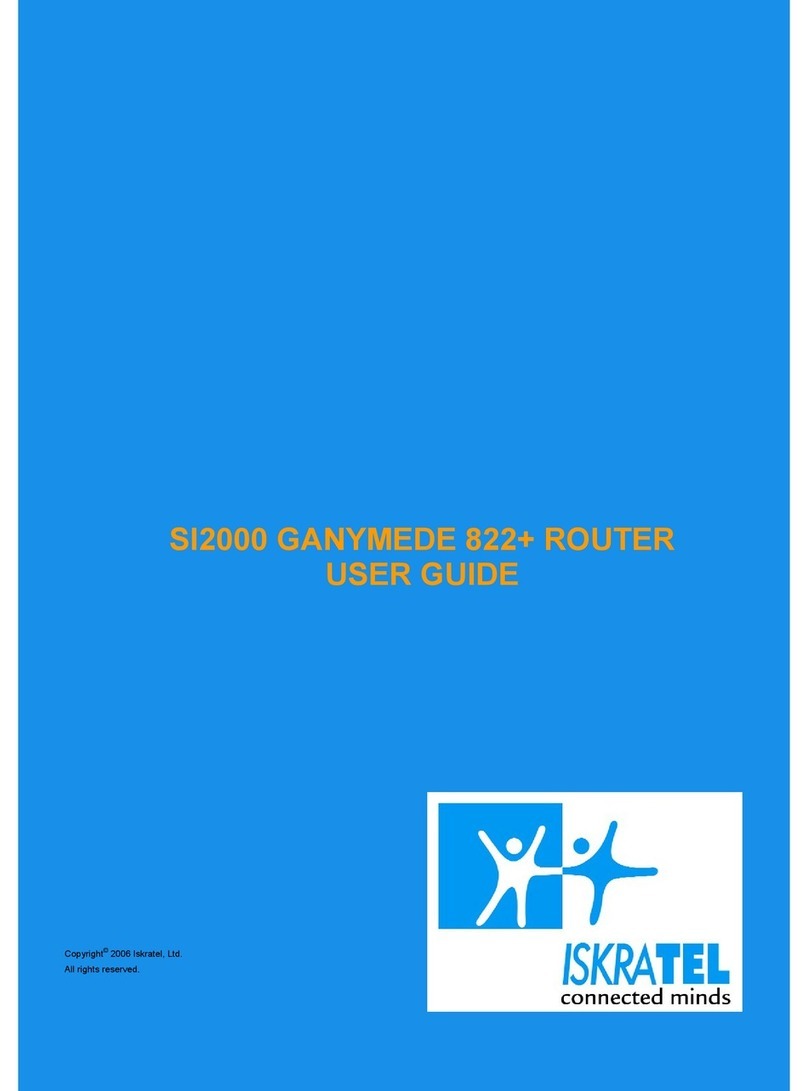
SI2000 Callisto821+ Router User Guide
KSS5320A2-ATE-010 6/109
© The contents of this document is the property of ISKRATEL KRANJ, SLOVENIA, and may not be copied, reproduced or disclosed to a third party without written consent of the owner
1 SI2000 CALLISTO821+ ROUTER
1.1 Features of SI2000 Callisto821+ Router
Your SI2000 Callisto821+ Router router features:
- high speed data transmission on single twisted copper pair for Internet access
- full rate operations up to 24 Mbit/s in downstream
- 10/100BaseT Ethernet port for LAN or PC connection
- PPPoE (RFC2516) connection support for accessing the Internet
- PPP over CHAP or PAP
- support for PPP over ATM
- support for IP over ATM
- RFC1483 bridged and routed support
- IEEE 802.1q VLAN support
- IEEE 802.1p Ethernet based quality of service
- DHCP server for easy IP address management
- DHCP relay
- DNS client
- DNS relaying
- WEB management and Telnet management over CLI (Command Line Interface) for LAN users
- firmware upgrade over WEB management
- support for VC based and LLC based multiplexing
- NAT (Network Address Translation) for single IP address Internet connection, used by the whole LAN
community
- firewall filtering functions, allowing better network security and management
- intrusion detection
1.2 Using SI2000 Callisto821+ Router
1.2.1 Internet access
Your SI2000 Callisto821+ Router can also be used for high speed Internet connections. The TCP/IP
standards, most commonly used for using the Internet, are supported by the router. The PPPoE connections
in dial-up or dial-in mode are also possible. In order to use your SI2000 Callisto821+ Router for Internet
access, there must be a DSLAM installed at a provider company's infrastructure near you. DSLAM is a rack
of ADSL line cards that links many customer ADSL connections to a single high speed ine. A typical Internet
access application is shown below on figure 2.
You can also use NAT (Network Address Translation) services that your SI2000 Callisto821+ Router
provides when setting up an Internet connection. This feature allows multiple users on LAN to use the
Internet connection, basing on one IP address. The DNS server and DNS relaying is also supported.




























